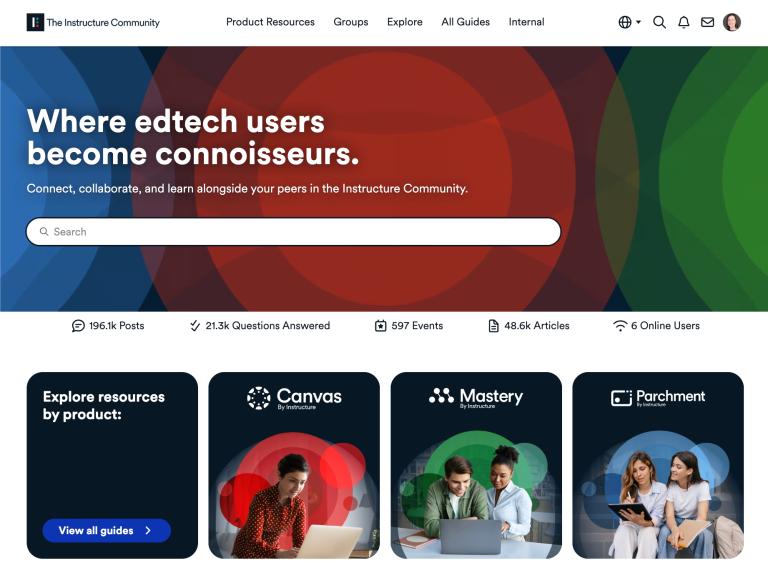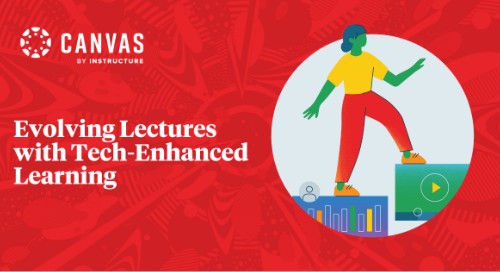As higher education evolves away from the traditional lecture hall model, tech-enhanced learning has the podium when it comes to meeting students' needs, whether in class or online.
Students and administrators alike feel student success today is driven by academic factors that include:
-
The quality of faculty (90%)
-
Engaging content/instruction (90%)
-
Available technology (88%)
-
Hands-on instruction (88%)
With continued emphasis from respondents on the quality of faculty each year in our 2022 State of Student Success & Engagement in Higher Education report, it’s worth looking at how instructor professional development has evolved. Institutions worldwide primarily provide educators with technology training (2022: 49% vs. 2021: 52%), diversity, equity, and inclusion training (2022: 46% vs. 2021: 47%), and periodic workshops (2022: 45% vs. 2021: 53%), although less so this year than in 2021.
Like our 2021 findings, North American (NORAM) faculty (60%) are most likely to have access to professional development opportunities for new technology training.
In 2022, Latin American (LATAM) faculty are the most likely to have access to periodic workshops (62%), and Asia Pacific (APAC) faculty (56%) are most likely to have access to research funding.
As the use of technology-enhanced learning continues to evolve, institutions will need to:
-
Ensure faculty are prepared to deliver high-quality online learning through modern learning techniques and methodologies.
-
Train faculty on ways to engage students virtually that foster a supportive and inclusive digital environment.
-
Equip faculty with the necessary technology for delivering quality online courses at scale.
While technology is a critical tool for education today, faculty ultimately empower students toward success. Therefore, supporting faculty is also supporting student success.
Intensive training at Virginia Union University led early adopter faculty members to champion the university’s transition to Canvas. Excited by the LTI tools, faculty shared their knowledge with others in the organization, and VUU scaled quickly from 17 to 364 online courses in just two weeks.
Foundational Strategies That Facilitate Tech-Enhanced Learning
One of the strengths of tech-enhanced learning is that it helps to eliminate the barriers to education imposed by space and time. Finding ways to use technology to emulate or enhance personal interactions is critical to institutional, student, and faculty success.
Technology can be used to create interactive learning experiences through in-person or virtual formats, as mobile apps, two-way video technology, and discussion forums are all useful tools that today’s students are readily familiar with.
Enabling online discussions for any course type is also paramount. From discussion boards to video chat, student-centered discussions can take many forms. The value of online discussion is that even those students who may be timid can express their views, and more in-depth dialogue between students can occur.
Additionally, digital services should be in lockstep with students’ desire for convenience. Offering flexible online tutoring, coaching, mentorship, and advising hours ensures every student can access what they need without having to visit campus.
A comprehensive tech suite that supports student success coupled with faculty training would help position institutions for long-term success.
More Ways to Create a Tech-Enhanced Learning Environment
Get more insights on the strategies that can support tech-enhanced learning at your institution in the article 6 Strategies for Tech-Enhanced Learning.
About the Research
For this report, we worked with Hanover Research, seeking input from 7,572 students, administrators, and faculty from 2-year, 4-year, public, and private higher education institutions across 23 countries. In fielding this survey each year, our goal is to define measurements of student success, identify factors for engagement, and shed light on the path ahead for higher education.
Interested in more findings from the 2022 State of Student Success and Engagement in Higher Education?
Related Content
 inst-3step.jpg
inst-3step.jpgBlogs
 13lmsfeaturesthatbenefitstudentlearning.jpg
13lmsfeaturesthatbenefitstudentlearning.jpgBlogs
 community-homepage.jpg
community-homepage.jpgBlogs

